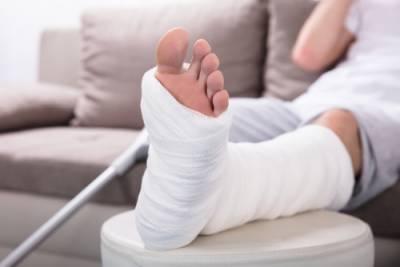
Sadly, the healing and recovery process for a fracture can be long and painful. During that time, the victim’s financial well-being and overall quality of life may be negatively affected. The following sections can help you learn which bones may be most susceptible to fracture in a car accident, and how the type of break may impact your settlement.
The Relationship Between Car Accidents and Bone Fractures
The law of physics says that an object in motion must stay in motion, so when your car collides with another vehicle, your body tries to continue moving. Depending on the speed at the time of impact, this continued motion can be strong enough to break even the strongest of bones. Bones may also be crushed between two objects during an accident, which can ultimately cause shattering or splintering. Hitting an object, inside or outside of the vehicle, can also cause a break or fracture.
Most Common Breaks and Fractures in a Car Accident
Fractures can occur to any bone. They are first classified as simple or compound. Simps breaks are those that do not break the skin. Compound fractures occur when the bone exits the body, either through a rip or tear of the skin. Both can result in secondary injuries, such as muscle or ligament tears. Most will also result in the atrophy of muscle during the healing phase.
Specifically, the bones that you are most likely to break in a car accident include the:
- Femur – Despite being one of the strongest bones in the body, the femur is particularly susceptible to a break during high-impact collisions;
- Tibia/Fibula – Lower down on the leg, you have the tibia and fibula. These are most often fractured in accidents that cause the vehicle to crumple;
- Ribs – Fractures to one or multiple ribs are extremely common in car accidents. They can even occur while wearing a seatbelt.
- Hip and Pelvis – The hips and pelvis are critical body structures. Fractures to these areas can lead to long-term disability;
- Wrists – Comprised of multiple small bone structures, the wrists are especially susceptible to fracture in an auto accident;
- Arms – An arm fracture typically occurs when a victim attempts to brace themselves for an accident;
- Facial and Skull Fractures – Most skull and facial fractures are caused by the victim hitting their head or face on a structure inside or outside of the vehicle. Scary and potentially severe, these fractures are most commonly seen in victims who were not wearing a seatbelt.
- Clavicle – The clavicle, or collarbone, is one of the most fragile bones in the body. That makes this bone highly susceptible to fracture in a car accident;
- Back and Vertebrae – The spine is comprised of multiple bony structures. Any of them can fracture in a car accident. Effects of this injury can range from nerve damage and generalized pain to complete paralysis, depending on the severity and location of the fracture.
Contact Our Green Bay Auto Accident Lawyers
Broken bones often limit a victim’s ability to work after the accident. When paired with the medical expenses that often accompany a break, the victim and their family run the risk of severe financial loss. Get the compensation you deserve. Contact the seasoned, competent Appleton car crash lawyers at Herrling Clark, Ltd. for a free consultation. Call 920-739-7366.
Sources:
https://www.cdc.gov/vitalsigns/crash-injuries/index.html
https://orthoinfo.aaos.org/en/diseases–conditions/fractures-broken-bones



